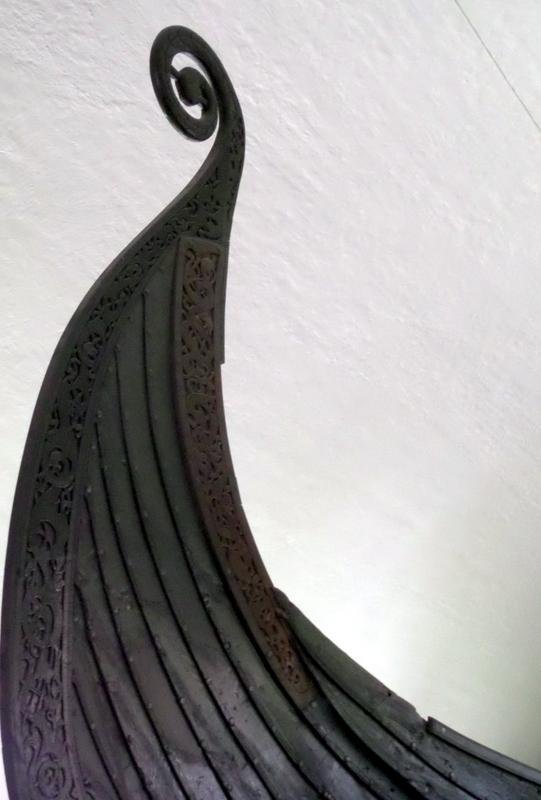
The Viking Ship Museum
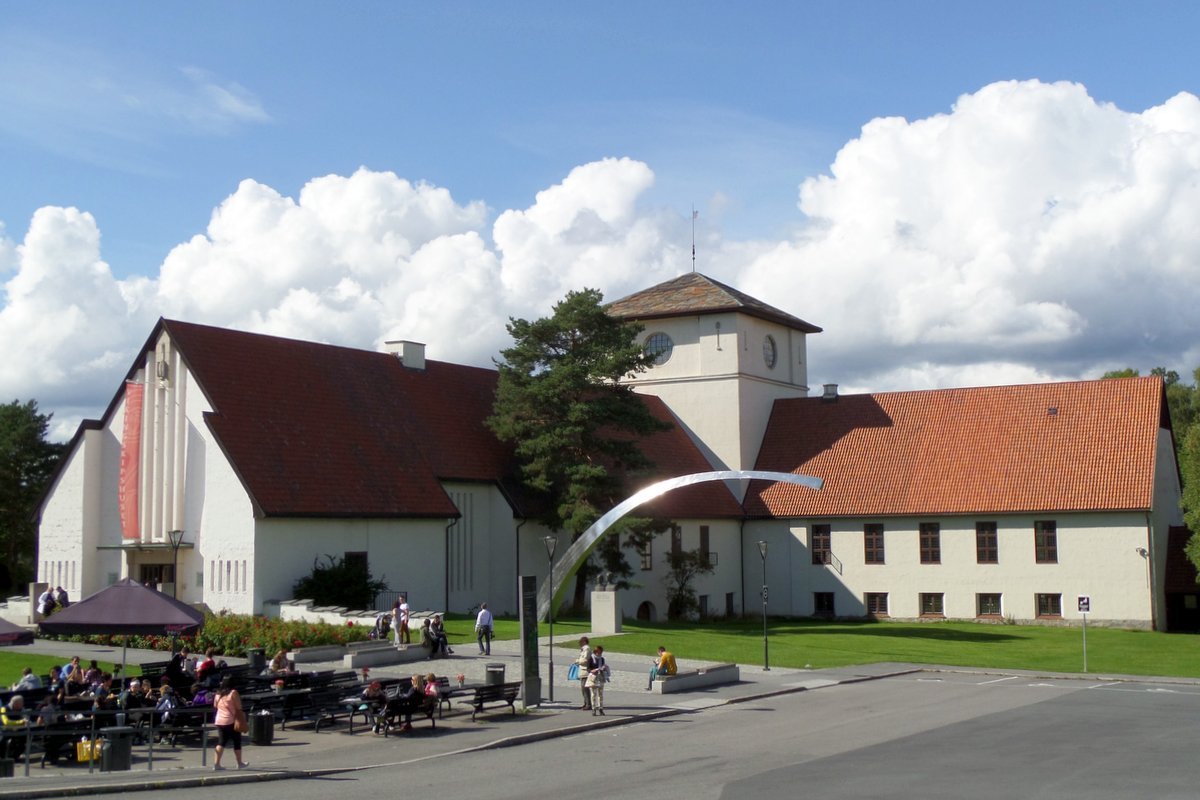
Another dream was fulfilled when I entered the beautiful Viking Ship Museum in Oslo, Norway. As I mentioned in my post about Fram, my world as a child was expanded through my family's library. My first exposure to Vikings was through an amazing book called The Viking edited by Tre Tryckare. I repeatedly return to the book, even to this day, to pore over the fantastic illustrations and fascinating photos. It had taken forty years, but I was about to see the viking ships in person.
The museum is laid out not unlike a church with long halls containing the most complete ships. The walls are thick, reminiscent of California missions. The treasures that lie within complete an atmosphere of quiet respect.
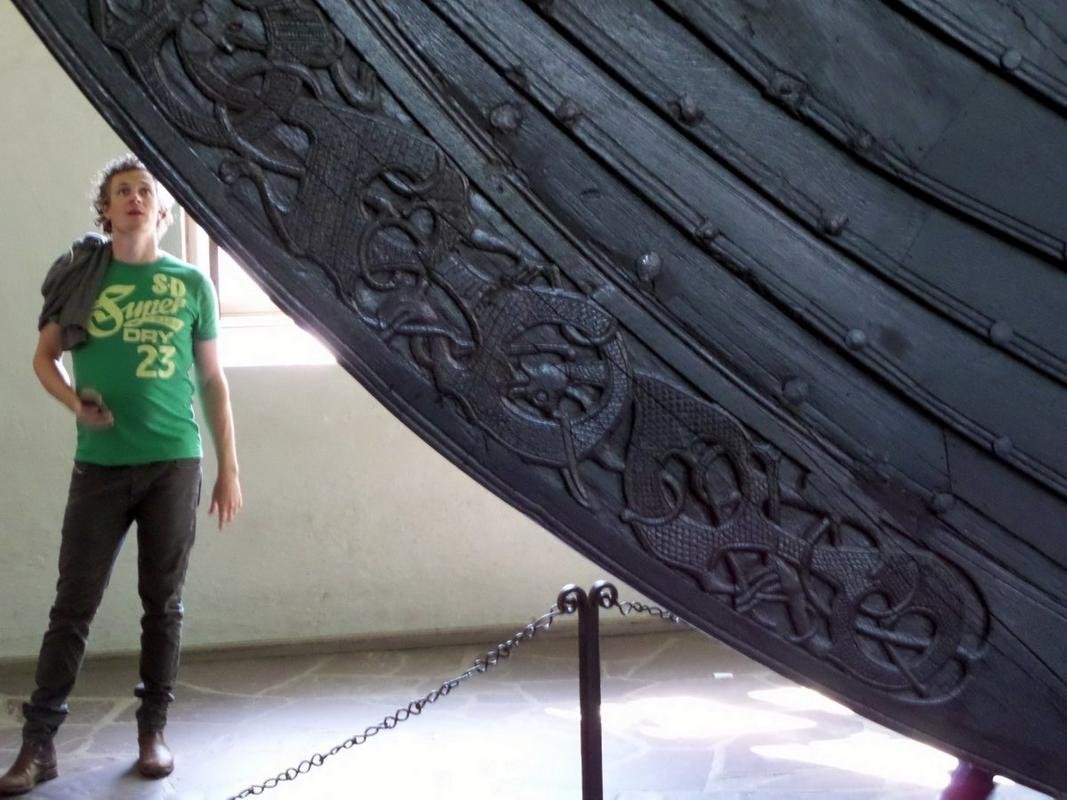 Carving detail on the Oseberg ship's bow
Carving detail on the Oseberg ship's bow
Ship Burials - Boat graves for Viking Dead
The two ships pictured here were ship burials (skipsgravene) found near the Oslo Fjord. The Oseberg ship was constructed in 820 AD and the Gokstad ship close to 900 AD. These vessels were at sea for years before becoming burial chambers for prominent men and woman who were entombed with many precious and mundane objects, animals, and provisions.
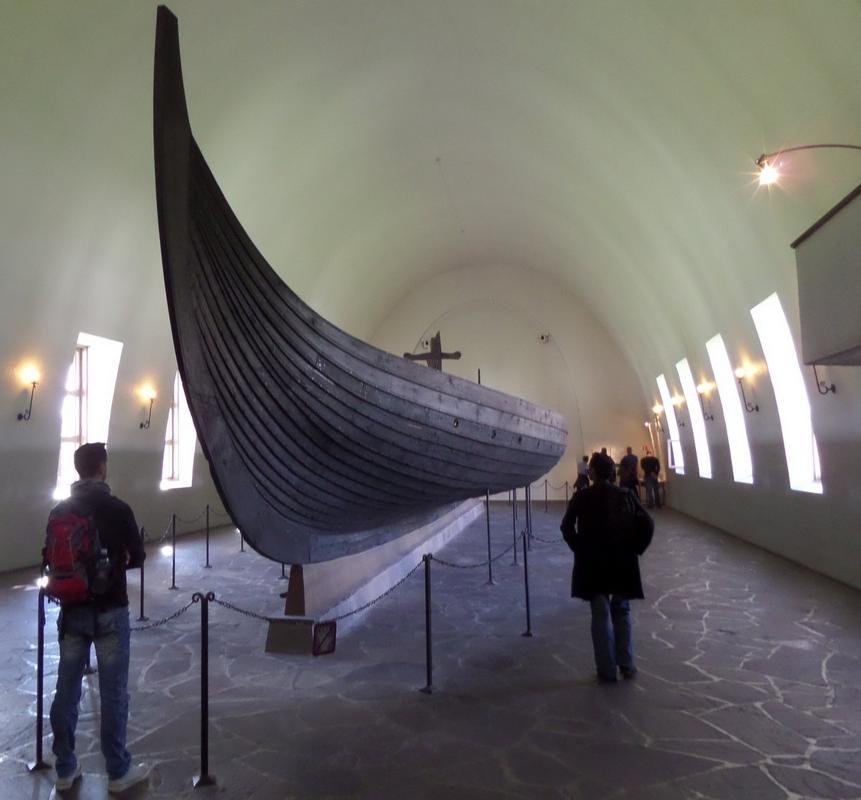 The Gokstad ship was excavated circa 1880 and reconstructed. It is considered the best preserved Viking ship in the world.
The Gokstad ship was excavated circa 1880 and reconstructed. It is considered the best preserved Viking ship in the world.
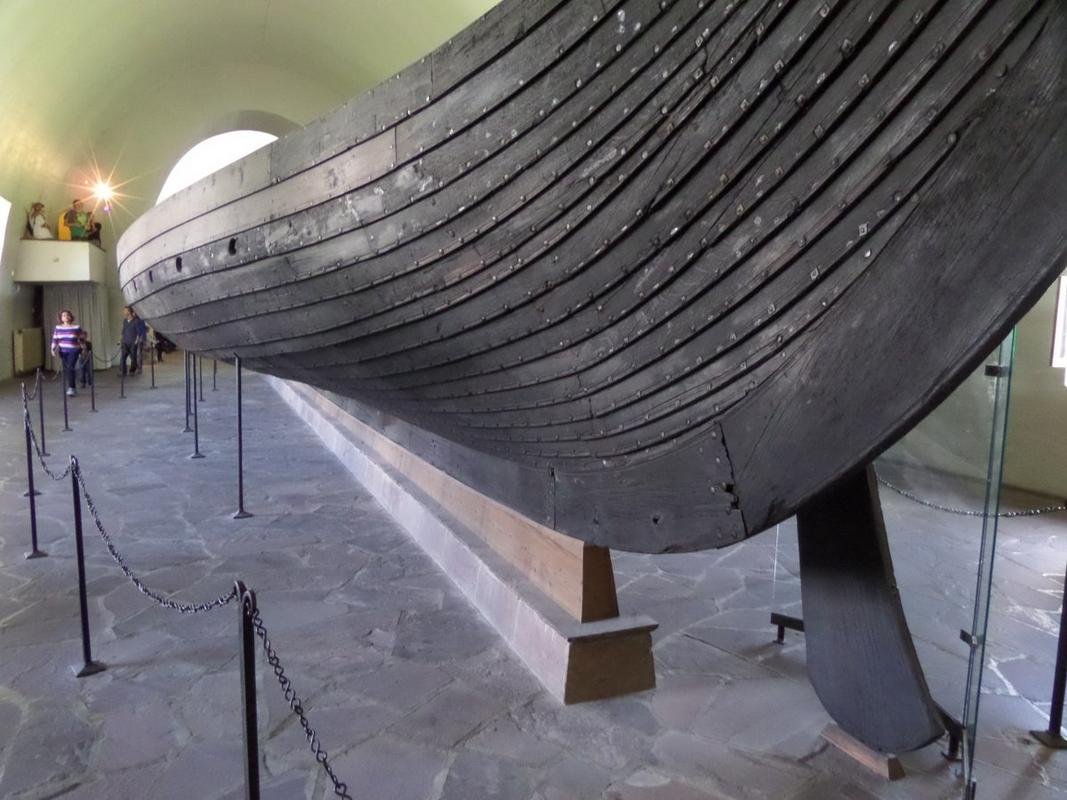 Detail of the Gokstad ship's construction and rudder. The overlapping planks are called lapstrake or clinker.
Detail of the Gokstad ship's construction and rudder. The overlapping planks are called lapstrake or clinker.
Viking ships were very versatile, sailing well on the open ocean as well as in fjords and rivers. They were able to point close to the wind while still having a shallow enough draft to land on beaches. Craft like these regularly visited Iceland and the British Isles, and even crossed the Atlantic to North America. Some question the reconstruction of these ships, stating that as historic objects, they should have been preserved as found. While I understand that argument, I'm glad these ships were painstakingly put back together and preserved. Viewing ships crushed by centuries underground pales by comparison to seeing these majestic vessels as they were when they carried Vikings far out to sea.
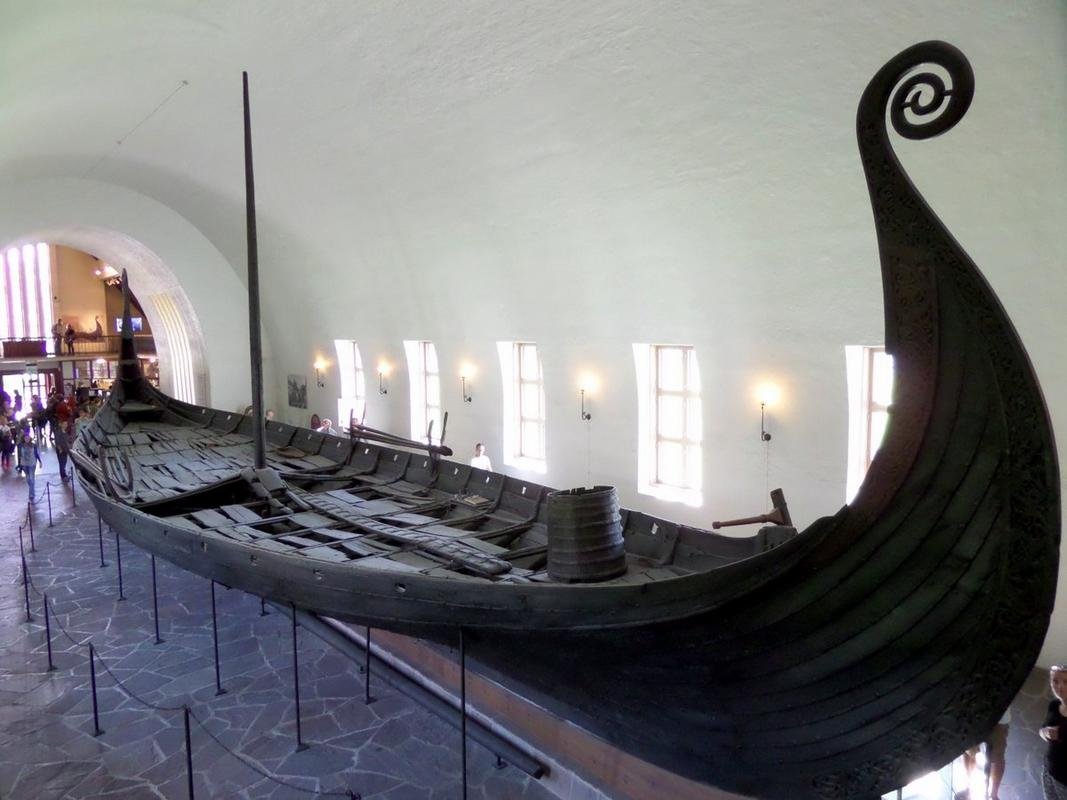 The Oseberg Ship as seen from above with its mast, tiller, decking, and a water cask.
The Oseberg Ship as seen from above with its mast, tiller, decking, and a water cask.
Learn more about Vikingskipshuset.
